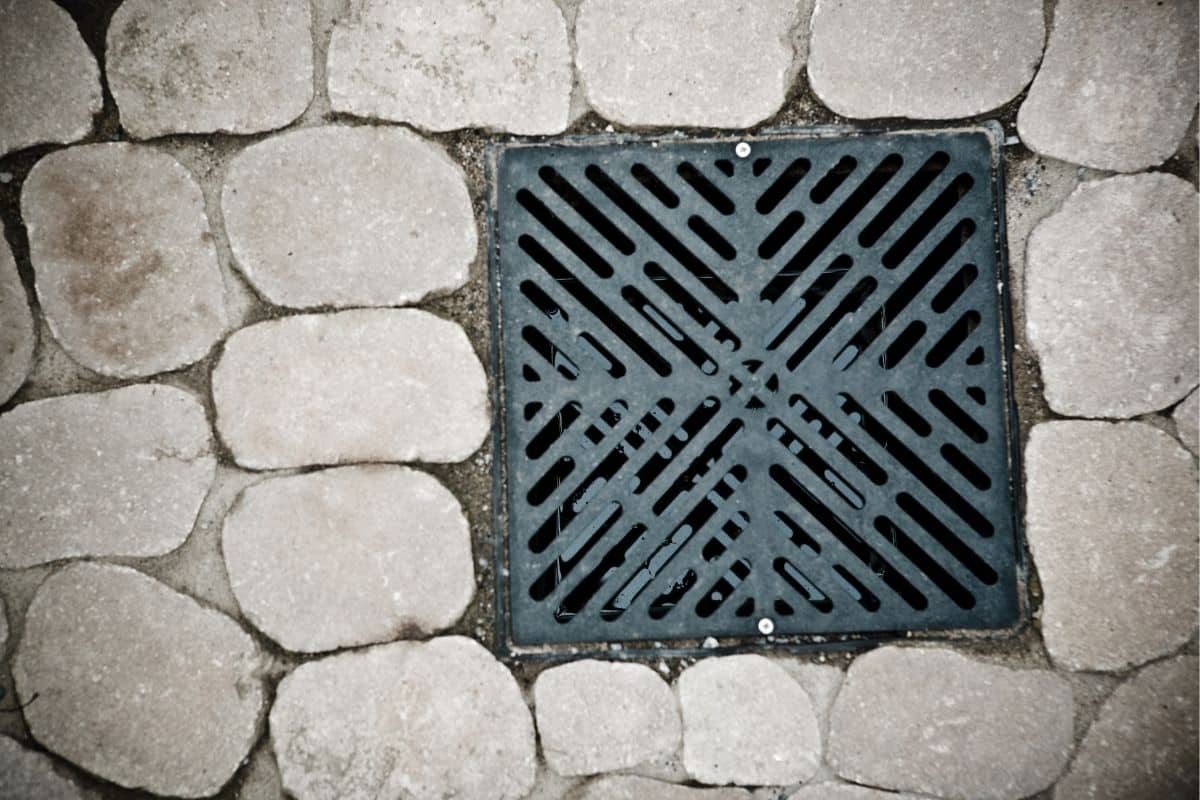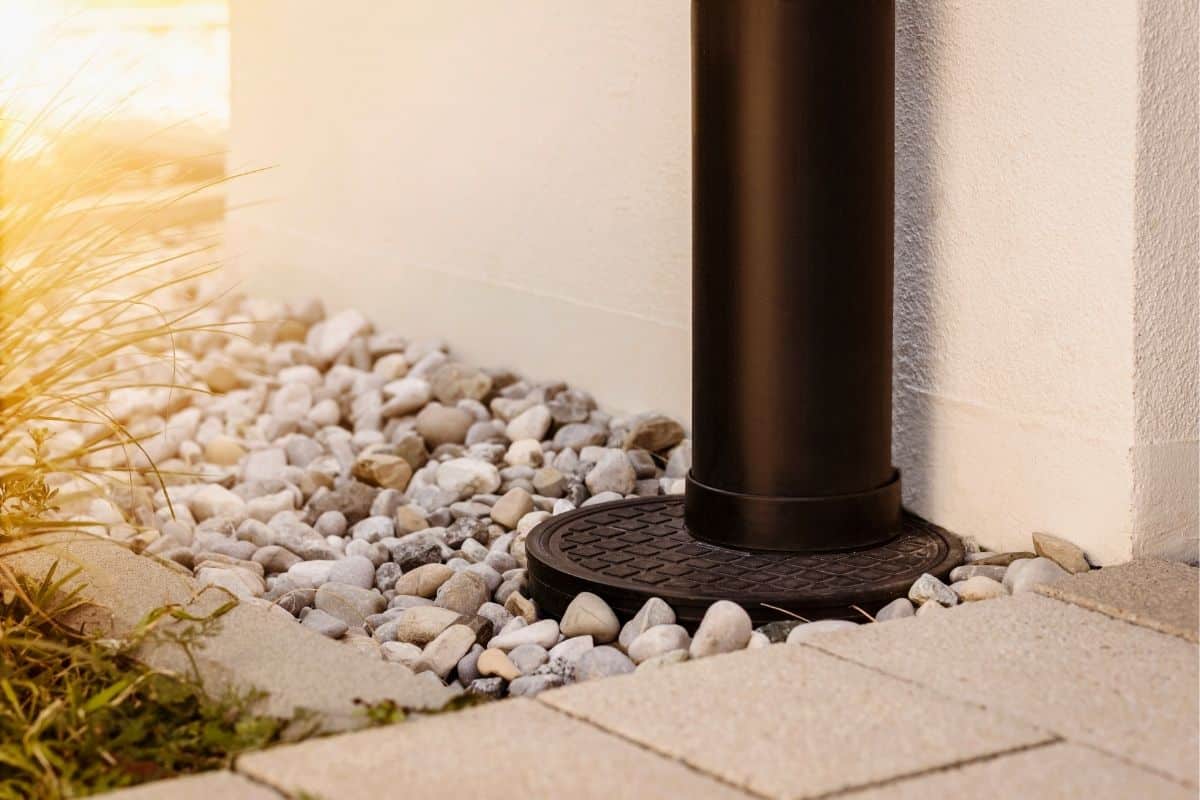Every homeowner dreams of a well-maintained, visually appealing yard that effectively manages water runoff. If you’re dealing with soggy patches or pooling water after rain, it’s time to consider drainage solutions. Many homeowners explore installing a dry well drain. However, another effective alternative is the French drain. Understanding the differences between these two solutions will help you choose the best one for your yard’s unique needs.

What Is a Dry Well Drain?
A dry well drain is an underground structure that collects excess water and allows it to seep slowly into the surrounding soil. This drainage method typically prevents standing water in low-lying areas of your yard, effectively addressing common yard drainage issues. It functions as a temporary holding area, preventing localized flooding and erosion.
Benefits of Dry Well Drains
Dry well drains offer several advantages, including:
- Efficient Water Disposal: They effectively handle water runoff by redistributing it underground.
- Aesthetic Appeal: Because they are buried, dry wells maintain the visual integrity of your landscape.
- Low Maintenance: Once properly installed, they require minimal upkeep.
A dry well drain is an excellent choice for homeowners facing challenges with standing water in localized areas. It effectively removes water, looks good in your yard, and needs little maintenance, making it a wise choice for anyone wanting to improve their yard’s drainage without losing its appearance.
When to Choose a Dry Well Drain
Opting to install a dry well drain can be particularly advantageous in several scenarios, including:
- Excess Water Accumulation
- Soil Infiltration Limitations
- Basement Flooding
- Stormwater Management Regulations
- Environmental Consideration
A dry well drain is a smart solution when one encounters wet soil conditions, poor drainage, or the need for sustainable water management practices on their property. However, it is essential to assess your specific needs and consider consulting with a landscaping professional to determine the best drainage solutions for your outdoor space.

What Is a French Drain?
Unlike a dry well drain, a French drain is essentially a trench filled with gravel and fitted with a perforated pipe. This pipe redirects water away from your home and landscape areas, protecting them from potential water damage.
Benefits of French Drains
French drains come with several compelling benefits:
- Superior Control of Surface Water: They efficiently manage and divert surface water away from your home’s foundation.
- Versatility: French drains can handle large volumes of water, making them perfect for extensive yard areas.
- Long-term Solution: Properly installed French drains can last decades with minimal maintenance.
French drains are a practical, versatile, and long-lasting solution for managing surface water, safeguarding your property against potential water-related problems, and maintaining a healthy yard environment.
When to Choose a French Drain
A French drain is most beneficial when your yard experiences extensive flooding or persistent issues with surface water. It’s particularly effective around foundations or basements, significantly reducing the risk of water infiltration and structural damage. Regular maintenance, such as clearing debris from the drain, can enhance its efficiency and longevity.
Dry Well Drain vs. French Drain: Three Key Differences
Understanding these critical differences will help you determine which solution fits your specific situation:
1. Installation and Design
Dry wells are typically installed vertically underground, occupying a compact area. French drains, in contrast, require horizontal trenches across your yard, making them suitable for larger-scale drainage management.
2. Capacity and Coverage
A French drain’s horizontal system provides more coverage if you frequently experience substantial flooding in your yard. Conversely, dry wells are better for localized issues, effectively managing smaller volumes of water.
3. Soil Permeability
A dry well drain depends on soil permeability for practical function. If your soil drains poorly or contains a lot of clay, a French drain might be a better option as it redirects water elsewhere rather than relying solely on absorption.
Making Your Decision
Choosing between a dry well drain and a French drain depends mainly on your yard’s specific drainage needs, soil type, and the scale of your water problems. Select a dry well drain if you have localized water pooling in small areas. Opt for a French drain if you have broader drainage concerns and require extensive management around foundations and basements.
Professional Evaluation Is Crucial
An expert assessment ensures the best drainage solution tailored to your yard’s unique conditions. Professionals specializing in grading and drainage services can identify underlying issues that homeowners might miss, ensuring your chosen drainage system provides a long-term solution.
Solve Your Yard’s Drainage Problems Today
Whether a dry well or French drain is right for your yard depends on your specific drainage needs and landscape conditions. Addressing drainage problems promptly and effectively will enhance your yard’s aesthetics and protect your home’s structural integrity.
For expert advice and professional installation, contact Architectural Landscape Design today. At ALD, we specialize in blending exquisite architectural stone craftsmanship with innovative living space design, all while providing personalized service that aligns perfectly with your vision and adapts to the changing seasons. ALD is your ideal partner if you value meticulous attention to detail and seek a cohesive, enduring landscape.
